Welcome to the step-by-step guide to building a gaming PC brought to you by Newb Computer Build. If you are new to building gaming PCs, you may be initially intimidated by just how much you need to know to get started. The goal of this article is to give a step-by-step for any beginners or Newbs out there who want to dive into what’s needed to put together their best possible gaming pc build that is fully compatible and gives you the performance goals you’d expect out of a brand new custom build.
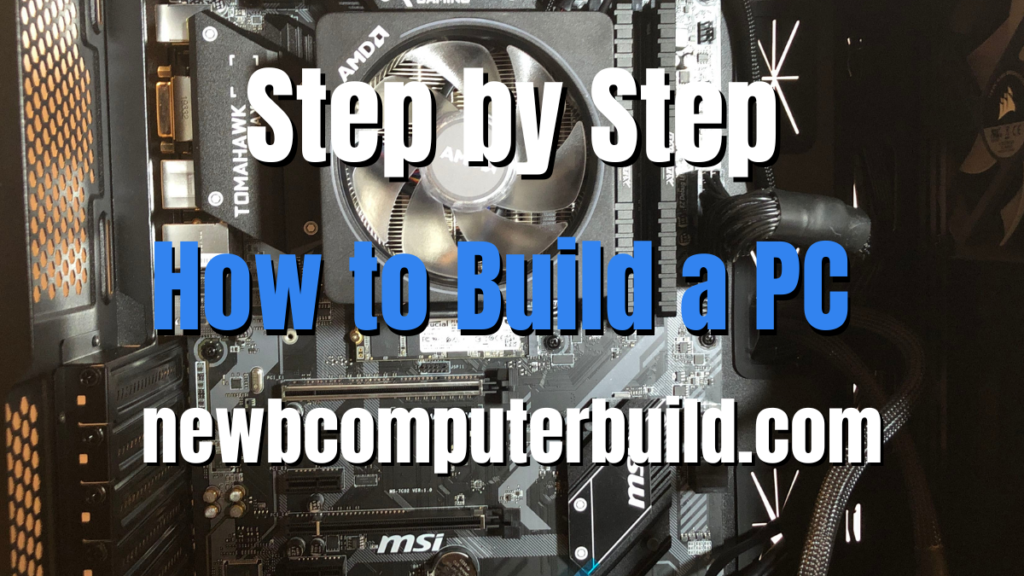
For those who would rather watch a step-by-step guide to putting the required hardware together, you can simply watch the following video we’ve recently put together. Or if you want to read even further into how to choose each piece of hardware, the whys and then the steps to putting your hardware together, then please continue below.
A Step by Step to Building a Gaming PC BuildThis guide will help familiarize you with the basic descriptions of what each piece of hardware needed for a gaming pc does, how to make sure each piece of hardware is compatible with one another, and give you suggestions on how & where to purchase your hardware.
Please use the navigational links found in the contents section below to help jump to a particular spot in the article or feel free to scroll through at your leisure.
Please visit the Newb Computer Build Best Gaming PC Builds for up-to-date gaming pc builds within various budgets.
Newb Computer Build has been bringing you the latest gaming pc builds and information for over 15 years
Article Contents:
- Why Build Your Own Gaming PC?
- How Newb Computer Build can Help you Build Your Gaming PC
- Planning Your Gaming PC Build – Choosing Your Hardware
- How to Choose a Processor
- How to Choose a Motherboard
- How to Choose a Graphics Card
- How to Choose an SSD
- How to Choose a Hard Drive
- How to Choose a Power Supply Unit
- How to Choose Memory (RAM)
- How to Choose a Computer Case
- How to Choose an Optical Drive…you don’t!
- Steps to Putting Your Gaming PC Hardware Together
- Final Word
Why Build Your Own Gaming PC?
If you are an avid Gamer or just a plain hardware enthusiast, then I assure you that there is nothing like putting together your own, fully functioning, computer. There are many reasons why one would want to put together their own PC and here are just a few reasons why:
- Building your own PC is cost-efficient: You get more for your money when building your own PC in terms of gaming performance per dollar spent. You can build a more powerful gaming computer at a much smaller price tag!
- Personalize and customize: By building your own gaming pc, you can make it unique to your taste or performance expectations with literally infinite combinations of hardware. Gamers, more than anyone, know the appeal of being able to customize. By building your own PC, you get to choose everything you put in it exactly the way you want it. Anything from the type of processor to the look of your snazzy, color matching computer case exploding with RGB, you can make a PC that works and looks best for you.
- The satisfaction: Nothing makes you appreciate the machine you game on, stream media on, listen to music on and do pretty much whatever else you do on it, then building it yourself. Building your own PC will enable you to learn more about the hardware you use, giving you a greater understanding of each individual part. This does, in turn, give you so much more satisfying than going to your nearest hardware retailer and buying a bland pre-built PC.
- It’s FUN: Building your own gaming PC will take a little research for all the specific hardware you need and to do this, you may have to watch or read hardware reviews and ask others for advice. This may seem like a lot of work, but you will have fun connecting with new people, learning new information, getting your geek on and most of all, having a great understanding and appreciation for your gaming PC. After all, this is why this website – Newb Computer Build exists, so that those who want to build can learn more about the process and check out our latest recommended hardware and builds.
- Interested in Collaborating with other gaming pc builders? Join our Gaming PC Builders Facebook Group!
How Newb Computer Build can Help you Build Your Gaming PC:
Newb Computer Build is a site dedicated to helping individuals build their new gaming PCs with ease. Here are just some ways Newb Computer Build tries to help individuals when building and upgrading their gaming PCs:
- Monthly Gaming PC Builds – Aside from providing information on how to choose your hardware, there are Monthly Gaming PC Builds in various budgets based on the newest hardware trends, reviews, and research done in order to provide up to date Gaming Builds, so that you can get the best value for your money. The monthly builds are put together keeping the latest price trends in mind and using the latest and best hardware in their specific budget categories.
- Monthly Gaming Peripheral Suggestions – Just like the monthly builds articles, there are peripherals posted as an aside to the builds. Since the gaming pc builds come with the essential hardware for the build itself, they don’t include things like monitors, keyboards, mice and OS’s in the base build costs. So if you don’t already have these peripherals or want a newer gamer specific alternative, then these articles are for you.
- Game Specific PC Builds – Sometimes you have a specific game, or sets up games in mind when trying to build a gaming pc. The main concern here is what sort of hardware will you need in order to play said Game at X frames per second at what resolution. Well, the game specific pc build articles will provide recommendations for hardware that targets those games using researched benchmarks to give you an idea of what to expect at various budgets and with specific hardware. Have a request or need recommendations for hardware for a game you play — then feel free to ask in the comments below!
- PC Build Support – In every single article posted at Newb Computer Build, the goal is to support fellow gaming pc builders. If you leave a comment or question it is our goal to respond and help you out. Likewise, this starts a conversation for others who may have the same questions and they may just learn from you as well. After all, Newb Computer Build is here for those that are learning to build a pc for the first time or those who are getting a fresh start on their latest gaming rig.
Planning Your Gaming PC Build – Choosing Your Hardware
So you want to build your very own gaming pc, one that will conquer, blow away any consoles gaming performance, shoot RGB lighting like there’s no tomorrow, but you’re not quite sure how to start.
Well, this is the very first step in building your very own gaming pc, that is actually choosing the right hardware, that’s compatible, fits within your budget and accomplishes the performance goals you have.
Choose Your Budget
Without getting too complicated to start, the first step here would be to actually choose a budget – what do you actually have to spend? If you’re wondering “hmm, but how much do I have to spend…” well that’s a loaded question and I will tell you why.
Here at Newb Computer Build, you may notice that we generally have a few budgets chosen in our monthly gaming pc builds of the month articles. This isn’t random, it’s actually chosen as a baseline to fit within specific performance brackets.
The performance brackets generally being a 60+FPS performance rating at the specific monitor and gaming resolutions of 1080p (1920×1080), 1440p (2560×1440), and 4K (3840 x 2160 pixels). So a $700 gaming pc right now should typically be able to blast through a 1080p no problem, a $1000 build at 1400P and a $1500 build should be able to play into 4K resolutions. I say play into because 4K is a lofty resolution to fully optimize for right now unless you’re loaded and can afford a $1000 graphics card (just the graphics card, then you have the whole build!).
However, that’s why within each of the pc builds of the month there is always additional hardware mentioned, as some individuals may have more to spend and can cater their build to their particular performance goals in a specific game, or to their specific tastes.
What are you Building Your PC For?
So you have how much you can spend, or an idea of what you can spend and are trying to determine if it’s the right amount for what your goals are.
The next step is to really ask yourself, is this a PC that’s going to mainly play Fornite maxed out on a standard 1080p monitor, then the $700 pc build may be all you need. Or, to really be certain, start off by searching online for benchmarks of individuals who have benchmarked the games or have played the game on the specific graphics card and CPU combinations to get a gist of what performance to expect.
Or if you do more than game and say, edit a lot of videos and render them, or stream live while gaming, then you may need a more hefty CPU with more cores that can keep up. Again, do some search for benchmarks and suggestions.
Let’s get really into this and start with each piece of hardware, to give you a full overview. Mind you this gets a bit more into what you may need to know, but hey why not get your geek on and dive right on in.
After all, investing in a gaming PC isn’t necessarily cheap for most of us, so we might as well know how it all works in unison.
How to Choose a Processor:
When you decide to build a gaming PC, one of the very first things you must decide on is which processor / CPU you are going to purchase. There are many factors that may be your deciding point when choosing a specific processor and my recommendation would be to choose exactly which processor you want before choosing other hardware parts, such as what motherboard you’ll need. This is because in order to choose a motherboard you must know the socket type/brand of the processor you choose, in order to purchase RAM you must know what your motherboard supports and so on.
I am going to go through what exactly a computer processor is, terms related to a computer processor and then include a few steps/decisions you should go through when deciding on the specific processor for you.
What is a “Processor”:
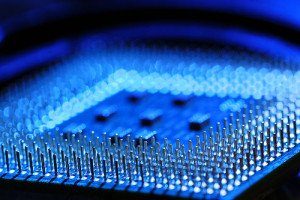
The processor aka. CPU – The Central Processing Unit of a computer is essentially the ‘brain’ of your computer system. It will perform any logical tasks and deal with sorting information in a manner that is as efficient as possible. I could go on and on about the finite details and history of the computer processor, however here we are interested in how to choose the best Gaming Processor for your Gaming PC Build, so let’s familiarize ourselves with the terms that you will want to know when you are shopping for a gaming PC processor.
Terms You Should Know:
CPU Socket Type: These will differ between Processor brands. Socket Types are simply the ‘shapes’ of your Processor, and how it will fit into the motherboard. You will want to know the CPU Socket Type so that you can buy a compatible motherboard, that will have the matching socket type. The socket provides the electrical interface and contact with the CPU.
Using a couple of processors used frequently in our builds, CPU socket examples used in the best gaming PC builds could be the Intel Core i5-10600K processor, which has an LGA 1200 socket or the AMD Ryzen 7 5900X processor, which has an AM4 Socket.
The CPU socket is quite literally, the shape and form of your CPU and it’s the compatibility of how it fits in the motherboard you’re going to be using it with. The CPU will of a series of pins that essentially make a connection with your motherboard, and the socket is what makes sure it’s a good fit.
Core(s): The number of cores pertains to the number of independent actual processors (each called a ‘core’) that are able to read and execute program instructions. Depending on the games you play, some are able to utilize more cores, of which more cores would make sense. You may want to look at your games and see if they support “multi-core” support. If you are unsure check with the game’s website or ask through online forums; most modern games now will have multi-core support. Some examples include “dual-core processors“, “quad-core processors“, and “6-core processors” as a few examples.
Operating Frequency: Is the internal frequency of a Processors core. Essentially, the higher the frequency for a given processor the faster it is. Frequencies are measured in Hertz. Such as 1 Kilohertz (kHz) = 1000 Hertz, 1 Megahertz (MHz) = 1000000 Hertz or 1000 kHz, and Gigahertz (GHz = 1000000000 Hertz or 1000000 kHz or 1000 MHz. For Example, A processor could be described as having a frequency of 2.8 GHz and is a Quad-Core Desktop Processor
Cache (L1, L2, L3): Put simply, the Cache is a really fast type of memory. These are used by the processor to reduce the average time it takes to access memory. When the processor needs to read/write to the main memory it will first check the cache for the data. These are different levels of “caches” that temporarily store data in between processes. This reduces the delay between what you want your Processor to do, and when it actually does it. When choosing a Processor for your Gaming PC keep the cache in mind and have an idea of what that CPU’s cache is for reference. But to focus more heavily on the cores, operating frequencies and if it comes down to choosing between two processors, it’s probably best to then take the one with the larger cache.
Thermal Design Power (TDP): This factor may not be of the utmost importance when choosing your Gaming PC processor, but the thermal design power dictates how many watts of heat can be dissipated without exceeding the maximum junction temperature of the computer processor. This will typically be the most power the processor will draw when running most applications, which can be a deciding factor for those trying to minimize energy usage or heat dissipation in smaller form factor builds.
CPU Cooling Device: When you purchase your processor you will need a cooling device to go along with it. Sometimes a CPU will come with a stock cooler (a heatsink/fan) that will be able to dissipate the heat created when your processor is being used, otherwise, you will need to purchase one separably. This may be one factor you may want to ‘make sure’ of before you purchase your Processor because you don’t want to be stuck piecing all of your hardware together and not realize your new processor did not come with one. If you find out that it does not come with one don’t fret, simply search for a compatible CPU / Processor Cooler based on your processor’s socket sizing and buy that separately – There are many CPU coolers available, some are air coolers and some liquid.
Steps to Choosing Your Gaming PC Processor:
Step One: Budget?
The number one step when buying any sort of computer hardware is to set aside what your budget is; obvious right? But this will automatically exclude or include all the processors available for you to buy. Most hardware sites will have some sort of menu option to sort by price, so this will make finding that right Processor that much easier.
One suggestion I have for someone wanting to search for the latest and best Processor for a gaming PC would be to check Toms Hardware’s “Best Gaming CPUs Articles as one example but essentially search around for what’s new, and what will work for your current performance goals.
Step Two: What Games do you Want to Play?

You are building a Gaming PC to play games, so before you choose your CPU do some research – and before you research a CPU –Write a list of the games you currently play and what games you will want to play now or in the upcoming future. Check the minimum system requirements and ask yourself if you want to play your games at the highest settings, or if you would be fine with medium / lower settings.
There are a few sites you could compare CPU benchmarks against one another, or if you’re on a pc your could check out the System Requirements Lab, where you can determine whether you are able to run a certain game on your current PC giving you an idea of what you may want. Check the minimum / recommended requirements against the operating frequencies and cores of all of the available processors and use this to narrow down your choices further.
If you are too lazy and don’t like reading too many benchmark numbers, well no fret, that’s what the Newb Computer Build Game Specific PC Builds section is for. If the game you’re interested isn’t located there, then you can always search on YouTube (for example Fornite Benchmarks) for gaming benchmarks using specific CPU playing specific games – which will give you a general idea of what sort of performance people are getting using that specific hardware on that specific game. You should look for things like what Frames Per Second (FPS) the game is getting, at what resolution the game is being played at and at what graphics settings.
Step Three: Which Brand?
This is where choosing a Gaming Processor can get a little foggy and just like any business some of this can fall back to competition. The two main contenders in the desktop Computer Processor world right now are AMD and Intel. You can base your decision on the brand by primarily using the first two factors discussed above – budget and what games you want to play and then try to research reviews/benchmarks for the games you want to play to see how certain processors perform.
A lot of reputable hardware retailers will have customer reviews for the more popular processor products so take a look at those, check out hardware forums – tell them what games you want to play and your budget (this can also reassure your decision).
Final words – For choosing your gaming pc processor:
Whether you are building your first PC, or you have built many it is always a good idea to refresh your knowledge by keeping up with the current trends in computer hardware so that you can choose the best choices for you. After all, Gaming PC’s have the most individualized and unique choices when it comes to choosing the hardware you want to game on, so you want to get the best of the best…for you!
Choosing a CPU may seem intimidating, but I assure you that if you look around you’ll most likely be able to settle on what will work for you without a problem. And if all else fails, simply ask here at Newb Computer Build and we’ll help you out.

How to Choose a Motherboard:
When you are choosing all of the hardware for your Gaming PC build, I would suggest that the very third piece of hardware you choose is the motherboard; with the Processor being your first choice. The reasoning behind this is that once you choose the Processor, you then are able to select all of the compatible motherboards based on the specific processor “Socket Type” (discussed in the Processor section). Then you can select all of the other options you want to be included on your motherboard.
And given that you are most likely building your gaming pc to play specific games, you may want to maximize your budget towards performance — the two main performance driving pieces of hardware being the processor and graphics card. So you may want to try and see what you may ideally need in those categories, and then move on to the other hardware and squeeze in what you can get — just my two cents.
I will start this section off with a brief description of what some of the parts of the motherboard you should be familiar with, and then a few steps you should go through when shopping for your new motherboard.
What is a “Motherboard”
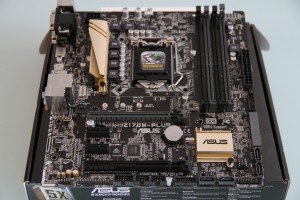
In a desktop PC, the motherboard / ‘mobo’ as the cool kids call it, essentially includes all of the crucial components of your system. The motherboard connects all of the components of a computer system including the Processor and can host a number of other peripherals, subsystems, and devices. Minimally a motherboard will include a socket to hold your Processor, memory slots for your RAM, a chipset (forms the interface between Processors front-side bus, main memory, and peripheral buses – don’t worry about these yet), non-volatile memory chip (which contains the firmware or BIOS – the software that can be used to control the motherboard), a clock generator (keeps everything in sync), expansion slots (for various peripherals), and a power connection (to connect to a power supply to power the motherboard). And mode modern motherboards will most likely come with at least some connectors for a mouse/keyboard, and mounting points for a heatsink or fan to cool your Processor…phew.
Terms you Should Know (For a Gaming Motherboard):
CPU Socket Type: This is the socket type for the type of Processor you have chosen. Each type of processor has a unique type of socket type (shape) that will fit into a motherboard. So you must make sure you choose the right motherboard socket type to fit your Processor.
Compatible Processor socket and compatible Motherboard socket = true love.
For example, An AMD Processor with an AM4 socket type will need a motherboard with an AM4 socket type or an Intel Processor with an LGA 1200 socket type, will require a motherboard with the same LGA 1200 socket type.
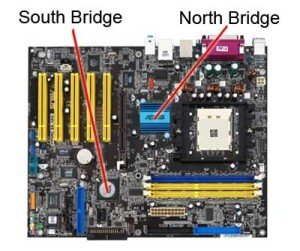
Chipsets Are unique to a type of processor and controls the communication between the processor and any external devices; these chipsets will usually refer to the Northbridge and Southbridge on traditional PCs. (The “traffic control center of your motherboard”).
Traditionally / in the oldish days…a chipset has two components (or chips) –
- The Northbridge will link the Processor to high-end devices such as the main memory and graphics controllers
- The Southbridge will connect lower-speed peripheral buses (storage, networking, sound chips etc.)
In modern gaming PC’s, however, there are now some newer designs that still are designed to work with specific processors and sockets, but there are differences as the functionalities are built directly into the CPU itself (instead of two separate chipsets). For example, Intel now calls the Southbridge a PCH or “Platform Controller Hub”, which allows performance hardware to communicate directly with the CPU. If this interests you at all, then the following video may help dig a tad deeper into what a motherboard’s chipset is.
What all of this means to you is that you should familiarize yourself with what a specific Chipset is for a specific motherboard. You can do this by choosing the right motherboard for you based on what chipset you need for the processor you’ve chosen, then by simply searching google that chipset name to familiarize yourself with what that particular chipset includes or allows you to do (overclocking etc.)
Do not fret too long over the chipsets as you can usually select a motherboard based on what it includes as described by any decent hardware retailer – but if you want to know more about the motherboard specifics it might be a smart idea to learn more.
Check out the following Wikipedia articles for a list of Intel Chipsets or a list of AMD chipsets.
Memory: As in how much and what type of memory your motherboard supports. A specific motherboard will support a certain number of memory slots, the numbers of pins your memory must-have, the type of memory (ex. DDR4 or DDR3), maximum amount of memory supported (ex. 32GB), and the channel supported (ex. Dual Channel Memory – in this case, it is best to install memory in pairs like 2 sticks of 2GB memory sticks).
Expansion Slots: Most modern motherboards will come with any different number of expansion slots. These generally include a number of PCI Express 4.0 or 3.0. You should pick your motherboard based on what peripherals you expect to be using with your Gaming PC and what you may want to add in the future. This includes Graphics cards (most now use PCI Express 3.0 and are now venturing into 4.0), USB ports (such as USB 3.1 version 1 and version 2), Ethernet, SATA (6Gb/s) and so on. Since we are interested in building Gaming PC’s, the suggestion is to always have room for a graphics card or two for either SLI or Crossfire capabilities (dual graphics card configurations, which can help boost graphics performance in the future should you decide to).
Storage Devices: What storage devices does the motherboard support? Desktop motherboards will generally support a number of storage device connectors like SATA III (serial ATA) or M.2 Connectors (faster port) to connect Solid State Drives or Hard Drives. This will be important to know what types and how many of each the motherboard supports so you can then purchase the storage devices compatible with the board. Usually, you do not have to pay to close attention to the number of drives a motherboard supports if you are purchasing one storage device, but if you want multiples you may want to check to see if you can. The most modern motherboard will have numerous SATA connections though.
Onboard Audio: Nowadays motherboards generally will come with great onboard audio (which means you do not have to purchase an external soundcard in order to have audio, never mind quality audio). If you are concerned about the quality of audio your motherboard, you can do some research on the motherboard audio chipset to get a better understanding of what type of audio quality to expect. With many modern motherboards, you can expect them to easily support up to 7.1 surround sound. For example, the Z170 chipset generally comes with the Realtek ALC1150 audio codec, which will probably be just fine for most gamers. For those of you that are more the “Audiophile” types, then you can definitely look into purchasing dedicated sound cards, but it’s not needed for building a gaming pc.
Onboard Lan: Most motherboard will come with onboard Lan (Ethernet) installed on them so that you can easily connect to the internet, however not all motherboards will come with a wireless option so if this is a concern you may want to shop for wireless adapters to connect to your motherboard. Wireless adapters can either be a USB adapter or PCI wireless cards.

Rear Panel Ports: These will be the included ports with your motherboard such as USB, Audio, PS/2, Optical and so on. This can be completely up to you – Just make sure you have enough of what you want in order to connect what you need to your motherboard such as mice, keyboards, audio etc.
Internal I/O Connectors: These will be the in and out connectors that you can connect to your motherboard, such as external USB through your computer case etc.
Form Factor: Motherboards generally built to a specified sized based on a standardized form factor. The form factor will dictate the physical measurements of your motherboard in terms of length/width and will, in turn, dictate the size of the pc case you will choose and how much can actually fit on the motherboard itself.
For gaming PC’s, the motherboard will generally either come in (largest to smallest) ATX, Micro-ATX, or Mini-ITX sizing. There are other motherboard sizes, but for the sake of this article and most likely the purposes of most gaming pc builders, you should know those three. Visit the Wikipedia article on Computer form factor to learn more.
Steps to Choosing Your Gaming PC Motherboard:
Step One: Budget?
Yes, I will always start with the budget as the number one thing to do when purchasing and choosing your gaming pc hardware. Why? Because I have found that when you are searching for a bunch of different hardware pieces that will fit your gaming PC needs you may start off by choosing the top of the line Processor, and then slowly find out that after the 7th piece of hardware (processor…motherboard…memory…graphics card…etc.) that you have spent way too much and may have a ton of additional and unnecessary included features you’ll never use. Go with a mid-range motherboard if you have to. Choose a motherboard that has just the right amount of peripheral support and not more than what you need. This way you will not overspend and you will have more money to spend on your other performance-driven hardware. As long as it supports your main performance pieces or hardware, you’re good to go.
Step Two: Make Sure Everything Will Fit
Hopefully, you have first chosen your processor, but also make sure you have chosen a motherboard that will fit the socket type for that processor. Then go through everything else you may need such as at least one PCI Express slot for at least one graphics card (or two slots for two cards), enough USB ports for externals like mice, keyboards and headsets, and make sure there are enough memory slots for the amount of memory you may need to play specific games. Lastly, take a look at the form factors of your motherboard – this will be the actual physical size of the board, which are generally standardized (example: ATX or Micro-ATX). You will want to know this so that you can fit it into a specific computer case you purchase.
Step Three: Future Proof!
Don’t just think about the precise amount of connectors, memory, graphics card you need this second. Think about what you may need in four months from now when you want to play that awesome new PC Game you have been waiting forever to play.
For example: If you know you only need 4GB of memory to play StarCraft II right now, you may want the ability to pump it up to 8GB, 16GB or even 32GB in the future – this way you can always add more memory later. The same goes for PCI Express slots for graphics cards (perhaps you want to add in two graphics cards via SLI or Crossfire), or SATA ports for more hard drive space, or even M.2 ports for those fast storage solutions.
Final words – For choosing your gaming pc motherboard:
I hope that you have learned something about choosing a new motherboard for your Gaming PC Build. It is of my opinion that choosing the motherboard is the hardest part of any PC build, as there are so many factors to look for and keep track of when shopping for a new motherboard – I guess this makes sense as the motherboard is responsible for connecting and running all of the crucial components of your computer.

How to Choose a Graphics Card:
When building a Gaming PC, the Graphics Card is a very important part to ensure you can run the games you want to play on the highest possible graphics settings. For many, the graphics card can seem like a very confusing piece of computer hardware to purchase since there are so many different brands, names, and numbers on top of the actual graphics card specifications. And this is all on top of actually deciding which card is best for you and what PC games you play, at what graphics quality and for what price.
In this section, I will start off with what a graphics card actually is, followed by the terms of a graphics card you should be familiar with and then conclude with a few steps you should take when shopping for one.
What is a “Graphics Card”
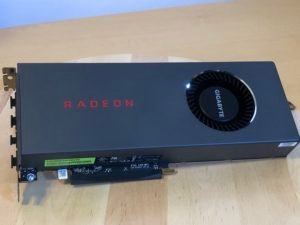
A Graphics Card aka. “Video card” or “GPU” is used to put graphics onto your screen and usually comes with a number of different functions. There are a lot of processors and motherboards that may have integrated graphics in them, however, this often is not enough to support more demanding graphics programs like PC games, so we use graphics cards / discrete graphics solutions. A lot of the time an integrated graphics chip (such as graphics built into a processor itself) will have limited ’embedded memory’ and will instead start using the available RAM. This is why (especially for a gaming PC) having a dedicated graphics card helps since it will have its own processor and memory dedicated to only graphics processing.
Often graphics cards will have a couple of options for video output such as a display port, digital visual interface (DVI), HDMI etc. and will generally connect to your motherboard via a port like PCIe 4.0 or 3.0 port. Before you purchase a graphics card, always check whether it has the connections you have and need on both the monitor you will be using and the motherboard you have or are getting.
Terms you Should Know (For a Gaming Graphics Card):
This list is certainly not a complete list of everything that can possibly be defined on a graphics card, but it is a list of terms you should be familiar with when building your gaming PC. This way you can narrow your thinking and not worry too much about the terms that may be irrelevant to you when choosing the right gaming pc graphics card.
Core Clock Speed (MHz): This will be the speed of your graphics cards processor, which is made specifically for accelerating graphics. Essentially, the faster this speed is the faster your processor is at processing graphics. This is generally measured in GHz. Even though clock speeds are provided, they shouldn’t be the only factor in determining which graphics card is faster than the other, as the actual performance will be determined by the graphics card architecture.
Memory Size: This is the memory used by the graphics card processor. It is used for storing data, screen image, Z-Buffer (manages depth coordinates in 3D graphics, textures, vertex buffers, and compiles shader programs) – More memory doesn’t necessarily mean a better or faster graphics card for those reasons. Generally, the higher the resolution you’ll be gaming at or of your monitor will require more memory than lower resolutions.
Interfaces: This will be what the graphics card uses to connect to your motherboard. For example: “PCI Express 3.0 x16”. You will want to double check what your graphics cards interface is and check whether your motherboard has that particular input.
OpenGL: “Open Graphics Library” is a standard specification that defines cross language, cross-platform API for writing applications that produce 2D and 3D computer graphics. This contains a number of functions that are called to draw complex 3D scenes from simple primitives. Again, like the DirectX you could look at the OpenGL version (example: OpenGL 4.1), however, most cards should be fine.
Ports: The ports on a graphics card will vary, and a ‘port’ is the output type of connector used to connect your graphics card to a monitor/tv/ projector etc. Ports like a VGA connector, S-video, component video, display port, digital visual interface (DVI), HDMI etc.
Maximum Resolution: Generally, a graphics card will state the maximum resolution it can support. This can be informative depending on what resolution you like to play your games on, or the maximum resolution your monitor can handle. (For example: 2560 x 1600 or 4K). This could be useful should you be planning to play at higher resolutions, you may want to check if the graphics card you are considering supports that particular resolution.
DirectX Support: Is a Microsoft collection of application programming interfaces (APIs) that handle the tasks related to multimedia on Microsoft platforms (like games). When you are looking at a new graphics card you may want to check the DirectX version (for example DirectX 12). However, this most likely will not be a huge influence as most modern cards should be fine.
“SLI” or “CrossFireX” support: These two terms are actually marketing names for both the two major graphics cards companies NVIDIA and AMD. The basic meaning of a card that supports SLI (NVIDIA) or CrossFireX (AMD) is that this enables you to link two or more graphics cards together to create a single output. These are applications for having two or more graphics cards that will process graphics in parallel to increase processing power available to graphics. Before you consider using SLI or CrossfireX make sure your motherboard has that number of inputs needed for two or more cards. And honestly, this may not be worth it these days, you may be better off just getting the next best graphics card you can afford.
How to: Steps to Choosing Your Gaming PC Graphics Card:
Step One: Budget?
Yep, I am using the budget as the number one step again for choosing your PC gaming hardware. This is because you may be surprised at how fast you might go over budget when piecing together numerous pieces of relatively expensive hardware. And the graphics card is no exception, and it will be most likely either the most expensive or second most expensive purchase in your gaming pc build overall.
Graphics cards may be able to be easily budgeted as you could potentially choose this after considering which processor you’d like to purchase, or you could honestly choose which graphics card you’d like to purchase first depending on what you find will work best for your gaming goals. The only downside to choosing a cheaper (lower quality graphics card) is that you will most likely have to play at lowered graphics quality in PC games, but sometimes if you do your research you can find graphics cards that are the best possible value for your money. For example: When choosing hardware for the Newb Computer Build Gaming PC Builds of the Month I will always choose the “best value for your money” graphics card for a specific pricing category, while also giving you an estimate at what resolutions and generalized games settings that particular build will support.
Step Two: What Games do you Play?

Choose a card based on the games you play. Why? Because why buy a top of the line graphics card when you don’t need to, or you probably want to make sure you can actually play the games you want to play on the highest possible settings; even those games you may plan to play in the future (after all you are going through all of this to build a Gaming PC).
How to Choose a Graphics Card Based on the Games you Play:
So how exactly do you choosing a card based on the games you play? Well, there are a number of ways:
- The number one thing I recommend is checking the minimum / recommended hardware requirements for a PC Game. Take the minimum graphics card recommendation and compare it to other Graphics Card Benchmarks. Look up the benchmarks for the recommended graphics card, and then compare it to the graphics card you want to purchase (or have). If the benchmarks for the card you are purchasing are higher, then you can play the game!
- A slightly less complicated step is to just ask. Go to any computer hardware site (or comment anywhere on Newb Computer Build – and we will definitely help you) and ask for people’s recommendations or thoughts on a graphics card choice you have for the specific game(s) you want to play.
- Also – look up gameplay videos or benchmarks using a particular graphics card on youtube (for example search “GTX 5700 in Fortnite Benchmarks”). There are plenty of people who record themselves playing every game imaginable while stating the hardware they are using. Look for things like what frames per second (FPS) they are getting, at what resolution they are playing at and at what graphics settings.
- Check the Systems Requirements Lab: To use this step you will have to already have a computer setup. The System Requirements Lab will tell you whether your present hardware can run any number of PC Games. This would be perfect if you have most of your hardware already and are shopping for a new graphics card, or if you want to know whether your current hardware is good enough for the game you want to play.
Step Three: What Resolution and Setting do you Want to Play Your Games at? / What Peripherals will you be Using?
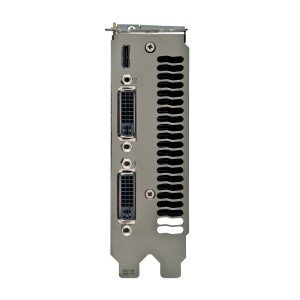
You may have chosen the top of the line graphics card and are thinking to yourself “kick ass!” However, what if you have nothing worthwhile to attach it to? What would be the point in having a fully capable graphics card that could pump out 60+FPS at 1440p resolutions and all you have is a crisp 1080p monitor? Also, always make sure you have a compatible monitor for your graphics card. Does it have a DVI port? HDMI? Check both your monitor connections and what the graphics card is able to connect to.
Final words – For choosing your gaming pc graphics card:
Hopefully, I have provided you with a relatively clear understanding of what you need to do to choose a graphics card for your new gaming pc build. The graphics card, in my opinion, can be a complex PC hardware piece to choose when building a new PC due to numerous naming schema like RTX 2080 Ti or RX 5700 etc. So don’t worry if at first sorting through the numerous cards you are feeling overwhelmed because it is. If you have any more question please do not hesitate to ask any questions.

How to Choose Your Gaming PC’s Storage (SSD):
See also: Does SSD Speed Matter for Gaming — Choosing the Right SSD for Your Gaming PC Build
Here, you will find out how to choose a storage solution for your Gaming PC Build. Choosing your storage is one of the less complicated pieces of hardware to choose when building your own gaming pc, but there are a few terms and storage types that you should be aware of and a few factors you may want to keep in mind when purchasing.
In this section, I will start off by generally describing what you should be considering when looking for your gaming pc build’s storage, followed by the terms you should be familiar with when browsing for what you need.
What is an SSD or HDD?
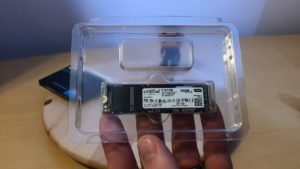
There are many different types of storage solutions out there to consider when choosing with the two major categories being a Hard Disk Drive “HDD”, or a Solid State Drive “SSD”. Basically, both act as a storage device for your computer that can read and write data, such as storing all of your files, games, programs etc. You can purchase your storage in varying capacities capable of holding either more or fewer data and others will have faster or slower read and write times.
Terms you Should Know (For a Hard Drive):

Interface: This is the interface that your hard drive will use to connect to your motherboard. The steps to take here would be to check what interface(s) your motherboard supports and then purchase a hard drive based on that. This will be important to figure out what type of storage to connect and what transfer rates are available. For example SATA 6GB/s, SATA Express, M.2 etc.
Capacity: This is how much space your hard drive can actually hold. Most consumer desktops drives will be measured in Gigabytes and the larger hard drives in Terabytes. For a quick and easy understanding of what this means is 1 000 000 megabytes (Mb) = 1000 Gigabytes (Gb) = 1 Terabyte (Tb).
RPM (HDD Only): This is the “rotations per minute” that your hard drive is capable of performing. The faster the RPM (the larger the number) determines how fast data is capable of being accessed. Ideally, you would want a hard drive with an RPM as fast as possible for using games. The RPM is only important in regular desktop hard drives, whereas what you should be using is an SSD drive, which is different.
Some examples of hard drive RPM’s are 5400RPM, and 7200RPM – the faster the better.
Cache: The cache of a hard drive is measured currently in megabytes (example: 64Mb) This cache is responsible for storing data temporarily for future use so that is can be accessed faster. The more that is stored on the cache the faster program information can be accessed, and therefore overall faster performance. Therefore, a hard drive with a larger cache will perform more efficiently in accessing previously opened data.
Solid State Drive: This is a type of hard drive that is much more efficient at data access time with a ton of less latency, however, this comes at a might higher cost per storage size. Solid State Drives are much more expensive than your conventional hard drives per Gigabyte of data storage and are therefore sold in smaller storage capacities. Some gamers (and other avid PC builders) will use a Solid State Drive to store their Operating Systems and most used software on which can provide impressive boot times, and loading times for their most-used software.
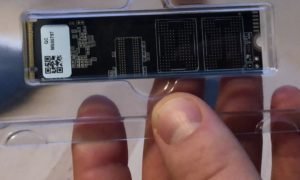
Form Factor: The form factor of a hard drive simply states the size and shape of the hard drive. Most general desktop hard drives will be 3.5″ while Solid State Drives will generally be smaller at around 2.5″ and we now have M.2 SSDs, which are internally mounted computer expansion cards that sometimes resemble a shape of a gum stick. As with all computer hardware, make sure you have space in your computer case to put your new hard drive (which you most likely do if you are building a fresh PC, or only are purchasing one or two storage devices).
Steps to Choosing Your Gaming PC Hard Drive:
Step One: Budget vs Need?
As I always say start with a budget for any PC hardware part. One of the easiest ways to skimp a few dollars is with a storage drive because you can generally always buy another later on if you need more space (you can add as many as your motherboard supports).
Why buy 2 TB worth of space if you will not fill it up right away? If you know you only have about 200 GB worth of data right now then why not wait until you fill up a newly purchased 500GB hard drive and then purchase another hard 500GB or 1TB when you have more games, videos or whatever else you may have…that is unless you can afford it.
Step Two: Check the Interfaces on Your Motherboard
When purchasing your new hard drive you want to know that it connects to something. So make sure that your motherboard has an open SATA 6Gb/s (SSD or HDD) port if the new hard drive requires a SATA 6 Gb/sport or M.2 port if you want to get a super speedy M.2 SSD.
Step Three: Choose an SSD With Faster Read / Write Times
Storage devices are becoming faster and faster, which essentially decreases the latency between retrieving data and writing new data to the drives. SSD’s will give you an estimate Read / Write time, and essentially the faster the better. With regards to HDDs, the higher RPM speed drives such as 7200 RPM will be better. This is not to say purchasing a slower 5200 RPM drive will have any dramatic effects in your overall PC gaming experience, but purchasing a faster SSD, for example, will make a world of a difference when loading up those games or even booting up that PC.
Final words – For choosing your gaming pc storage:
Well, I hope that this article gives you a clearer understanding when searching for new storage for your gaming PC build. There are only a few technical factors like storage size, drive types and cache to look for when shopping for a new hard drive, so once you have a general understanding of those terms, buying a new hard drive should be no sweat.
How to Choose Your Gaming PC’s Power Supply Unit (PSU):
The power supply unit is very important since without it nothing in your PC would run; it gives your PC the power it needs to turn on and function. When purchasing a power supply for the first time you may feel confused by what brand of power supply to buy, the wattage you need for your particular array of PC hardware and a few other power supply dependent terms.
In this section, I will start off by describing what exactly a power supply unit is, followed by some power supply unit dependent terms, and then conclude with a few steps you should follow when choosing the right powers supply unit for you.
What is a “Power Supply Unit”
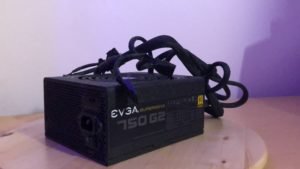
The main purpose of the power supply unit, also known as a ‘PSU’ is to provide power to your PC. A PSU serves the purpose of powering your PC by converting regular alternating current (AC) power into direct current (DC) power to be used by the internal hardware parts of your PC. PSU’s are generally rated by their maximum power output in Watts and a general-purpose computer would use less power and would only need a PSU with a power outage of around 300W to 500W, however here we are concerned with powerful gaming PCs, which you will most likely need a PSU with a power outage of anywhere from 500W to 1000W depending on all of the hardware you have.
A PSU will come with various connectors of which will come with a variety of the following: (From Wikipedia)
- PC Main power connector (usually called P1): This is the connector that goes to the motherboard to provide it with power. The connector has 20 or 24 pins. One of the pins belongs to the PS-ON wire (it is usually green). This connector is the largest of all the connectors. In older AT power supplies, this connector was split in two: P8 and P9. A power supply with a 24-pin connector can be used on a motherboard with a 20-pin connector. In cases where the motherboard has a 24-pin connector, some power supplies come with two connectors (one with 20-pin and other with 4-pin) which can be used together to form the 24-pin connector.
- ATX12V 4-pin power connector (also called the P4 power connector). A second connector that goes to the motherboard (in addition to the main 24-pin connector) to supply dedicated power for the processor. For high-end motherboards and processors, more power is required, therefore EPS12V has an 8 pin connector.
- 4-pin Peripheral power connectors: These are the other, smaller connectors that go to the various disk drives of the computer. Most of them have four wires: two black, one red, and one yellow. Unlike the standard mains electrical wire color-coding, each black wire is a ground, the red wire is +5 V, and the yellow wire is +12 V. In some cases these are also used to provide additional power to PCI cards such as FireWire 800 cards.
- Auxiliary power connectors: There are several types of auxiliary connectors designed to provide additional power if it is needed.
- Serial ATA power connectors: a 15-pin connector for components that use SATA power plugs. This connector supplies power at three different voltages: +3.3, +5, and +12 volts.
- 6-pin Most modern computer power supplies include 6-pin connectors which are generally used for PCI Express graphics cards, but a newly introduced 8-pin connector should be seen on the latest model power supplies. Each PCI Express 6-pin connector can output a maximum of 75 W.
- 6+2 pin For the purpose of backward compatibility, some connectors designed for use with high-end PCI Express graphics cards feature this kind of pin configuration. It allows either a 6-pin card or an 8-pin card to be connected by using two separate connection modules wired into the same sheath: one with 6 pins and another with 2 pins.
- An IEC 60320 C14 connector with an appropriate C13 cord is used to attach the power supply to the local power grid.
Now, for a few generalized terms, you should be familiar with when choosing a new power supply unit for your gaming PC build so that you are familiar with the basics of what to look for and for knowing when building your pc.
Terms you Should Know (For a PSU):
Power Supply Unit Type: This designates the type of power supply unit. For the most part and what we are concerned with here (for building a PC right now – especially gaming PCs!) are the ATX types of power supplies. ATX is basically a technology standard of sizing for motherboards, computer cases, and power supplies.
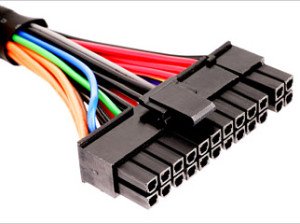
Main Connector or Motherboard Power Plug: This will be the main connector, the one that connects the power supply unit to your motherboard. Most likely if you are purchasing an ATX power supply unit the main connector will be a 20+4Pin connector. This connector will fit into either a 20 pin or 24 pins the main connector on the motherboard.
+12V Rails: Supply supplemental power to the processor (sometimes the graphics card) on the motherboard.
PCI-Express Connector: As the name states this type of connector will power a PCI Express card such as a Graphics Card.

SATA Power Connector: The SATA power connectors will be the connectors used to power any SATA hardware. The number of SATA ports will usually vary, so you may want to check the number of SATA connectors depending on how many mass storage devices you plan on having. This is generally the number of hard drive + the number of optical drives (DVD, CD Blu-Ray etc.)
Efficiency: The efficiency rating for a power supply unit will usually be given in a percentage. What this means is the percentage of efficiency of AC current that will effectively be converted into DC current.
- For example: If a power supply unit is stated as being 75% efficient and has a 750 Watt energy rating, what this means is that takes roughly 1000 Watts of Alternating Current (AC) in order to convert to 750 Watts of Direct Current (DC). If it takes 1000 Watts of AC to convert to 750 Watts of DC power, then the excess power (250 Watts) is lost to heat.
Power Supply Efficiency Level Certifications
Levels of 80Plus certification for 115 V consumer-grade power supplies and their efficiency requirements (neweggbusiness.com)
| 80 PLUS Certification Levels | Efficiency at 10% Load | Efficiency at 20% Load | Efficiency at 50% Load | Efficiency at 100% Load |
| 80 PLUS | — | 80% | 80% | 80% |
| 80 PLUS Bronze | — | 82% | 85% | 82% |
| 80 PLUS Silver | — | 85% | 88% | 85% |
| 80 PLUS Gold | — | 87% | 90% | 87% |
| 80 PLUS Platinum | — | 90% | 92% | 89% |
| 80 PLUS Titanium | 90% | 92% | 94% | 90% |
MTBF: Is the Mean Time Between Failures – Which is the mean amount of time that passes between any inherit system failures during operation. (For example, MTBF: > 100 000 hours would mean that the inherent time between failures is 100 000 hours). This is not necessarily the most important thing you need to keep in mind when purchasing a PSU for your gaming build, but it may be something interesting to know.
Modular Power Supply Units: These are simply types of power supply units that have modular cables. This enables you to detach any cables that you do not end up using so that they don’t take up more space than they need to in your computer case. For the most part, this is not ever actually required, but if you like to keep things clean and hate messy cords then you may decide to go modular. The only downside is that you will end up paying more money for a modular PSU.
Steps to Choosing Your Gaming PC Power Supply Unit (PSU):
Step One: How Much Power do you need?
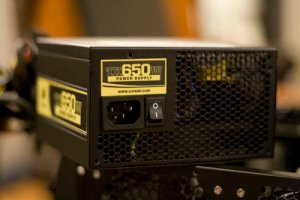
Nope, I did not start with a budget this time – why? Because I believe the power supply unit should not be something you try to save as much as humanly possible on. After all, this is the main unit that powers every piece of hardware you have and will be purchasing. Here the main question is how much power is enough to power? The actually PSU Wattage you decide to buy will be determined by the sum value of all the hardware power requirements you have decided to purchase.
And then the second question is, will this power supply not fail on me and is it of reputable value.
But how do you determine how much each individual piece of hardware requires? Well, there are a few ways you can go about determining how much power you need for a power supply unit for your gaming build, and there are some decent calculators to do this on the web. If you are looking for a good online calculator I would recommend the one at eXtreme Power Supply Calculator. It’s easy to use and probably the best to use once you have decided on all of the hardware you want in your build. Simply plug in your hardware details and the calculator will spit out an estimated wattage requirement (trying to also compensate for overclocking and perhaps future hardware upgrades).
The power supply should be the last piece of hardware you purchase for your build since you do need to know everything your PSU will be powering. As well, always buy a power supply with more than the minimum Wattage you need so that you can upgrade your gaming PC later on as well (this does not mean you should be getting a 1500W PSU when realistically 600W will do, so some estimation is needed.
Step Two: Research the Brand / Reputable PSU’s
You should always buy from a reputable power supply unit company. This is because you want to know that you are buying a relatively good quality PSU and so you do not do any unforeseen harm in the future to your PC hardware. This can be done in a number of ways: Such as lookup hardware reviews for “reviews on brand-X power supply units“, also look at the consumer reviews usually available at hardware retailer sites, or you can ask in any online hardware forum.
Step Three: Check the PSUs Efficiency Rating
If you want to know your PSU is as reliable as possible, then you may want to buy one with an efficiency rating as high as possible. The efficiency rating as stated above simply is the amount of Alternating Current that actually gets converted into Direct Current for your PC, while the excess energy gets converted into heat. A poor efficiency rating may create a lot of wasted heat and would require much more cooling; more heat than needed in a PC is a bad thing.

There is actually an initiative that was set place to promote more efficient power supplies labeled 80 PLUS certified. So if you are purchasing a power supply unit that says it is 80 PLUS certified you can be sure that it has an efficiency level of…well..80% and above.
Final words – For choosing your gaming power supply unit (PSU):
Choosing a new power supply can be complicated since you do need to know everything you are either purchasing or already have in your PC, which means this should always be the last piece of hardware you decide on. Generally, gaming PCs will require a power supply unit with higher power ratings than a general PC as they usually have more powerful hardware such as discrete graphics cards.

How to Choose Your Gaming PC’s Memory (RAM):
*Crucial RAM Elite.
The type, the capable amount and the speed of the Memory you put in your PC will all depend on what your motherboard supports. Generally, in a Gaming PC Build you won’t have to worry too much about all of the nitty-gritty details on your RAM (Random Access Memory), such as data rates, latencies, and voltages – but it can be good to know about when searching around.
In this section I am going to give a quick overview of what Memory in a desktop computer is, followed by some terms you should be familiar with when searching for desktop Memory and then conclude with a few steps to follow when purchasing Memory for your gaming PC build.
What is “Memory or RAM”

In a desktop PC, memory aka. RAM – Random Access Memory is the space where the Processor temporarily stores data and programs so that it can be accessed as quickly as possible for continual use. In layman’s terms, RAM is usually described as a tool bench where you store your most used tools so that you do not have to keep searching for them when they need to be used. The speed of your RAM will ultimately determine how fast the data on your RAM can be transferred to and from the Processor resulting in more data being transferred in less time.
The system memory modules are stored on a stick called a DIMM (Dual inline memory module), which is the circuit board that can fit into your motherboard. There are also many different sub-categories or types of RAM, however, since we are wanting to build a Gaming PC (and most general desktop PCs) we are concerned with DRAM aka. Dynamic RAM, which means the RAM is continually refreshed 1000s of times a second or else it loses its data.
Terms you Should Know (For RAM):
Type: There are several different types of RAM and the type of RAM you purchase / use
is determined by what your motherboard can support. When building a gaming PC right now most likely the motherboard will call for either 240-Pin DDR3 RAM or 288-pin DDR4 RAM memory type, but please always check to make sure.
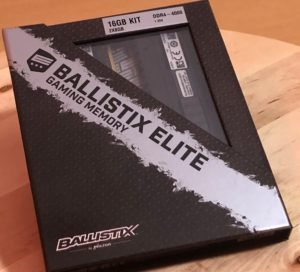
Capacity: Most modern RAM capacities for desktop PCs will be measured in Gigabytes (GB) – For example, 16GB (2 x 8GB) means that there is a total of 16GB included using two 8GB memory sticks. Simply stated, the higher the capacity of RAM you have, the more programs you can have running at once. Most motherboards will only support up to a certain maximum amount of memory capacity, so you should always check this as well.
Speed: The speed of the RAM is measured in two ways – with its operating frequency and bandwidth. The bandwidth states how fast data can transfer at a time.
For example, A piece of RAM that states its speed as “DDR4 4000 (PC4 32000)” means that its operating frequency is 4000Mhz, with a 32000Mb/s Bandwidth. The higher the values the faster your RAM can transfer data.
Cas Latency / Timing: This is the amount of time it takes between a Column Address Strobe (CAS) being signaled to start and when it starts an initial transfer of data (because data on the RAM is stored in columns and rows). Yes this sounds complicated and no you do not need to know the specifics (unless you want to), so when looking at a RAMs Cas Latency / Timing you will be given a number, and the smaller the number the better the latency is.
Voltage: This would be the highest supported voltage of a memory module and would only be of concern if you ever plan to overclock your RAM. (Example: 1.35V).
Multi-channel Kit: These are kits that include multiples of the same memory modules (one for each channel) and are supported in motherboards that support multi-channel mode. These are good because generally identical memory modules are preferred for multi-channel use because this will make sure everything is as compatible as it can be.
Heatspreaders: These are added to most high-end memory modules to literally spread the heat produced while the memory is functioning. This provides a more efficient cooling method. Seen on the right, you can see the red metal heat spreaders on the two RAM modules.
Steps to Choosing Your Gaming PC Memory (RAM):
Step One: Budget and Motherboard Support:
The very first step when choosing which RAM to buy must be what does your motherboard support? Most modern motherboards will be using DDR4 of varying speeds. So for example, if a motherboard calls for DDR4 1066/1333/1600/1866 it is asking for DDR3 of speeds 1066 or 1333 or 1600 or 1866, mind you those would be slow speeds.
Once you have the type of memory you need to be looking for, then you can sort through the many different brands offering that type of memory at all of those speeds. I am bringing up a budget here because your budget may determine whether you choose a higher speed of RAM, the capacity of RAM, and which brand to choose. A general rule of thumb for most gamers though is to focus more on the capacity of the RAM (example: 8GB) versus the RAMs frequency.
Step Two: Capacity – How Much?
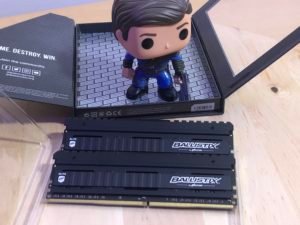
While there is no magic number of RAM, the capacity of RAM you decide on should be solely driven by what you are going to be using your PC for. We are building our PCs for gaming, so more RAM is never a bad thing. A minimum amount of RAM right now would be about 8GB DDR4, (this is getting really affordable). And slowly but surely, 16GB is becoming more of the standard, but you can always add later on if you can’t afford it now.
Step Three: Which Brand?
You may find that after you have decided on your exact budget, type of RAM needed, the speed of RAM and the capacity you want that there are still tons of brands offering that exact RAM specification. This is where you may want to do some personal research – such as asking in any hardware forums or reading consumer reviews at hardware retail sites. Generally speaking, RAM won’t vary in quality as many brands by brand my experience as other computer hardware parts.
Final words – For choosing your gaming memory (RAM):
Choosing RAM for your gaming PC build is not actually that tough, as there are only a few things to keep in mind. Allot of what I have written here comes down to just knowing what type of RAM your motherboard supports, what speed you want (or can afford) and what capacity of RAM you would like. As a current general rule of thumb, I would start with 8GB of RAM for most modern gaming builds and more depending on the size of your pocket.

How to Choose Your Gaming PC’s Optical Drive:
I’m essentially leaving this here for legacy’s sake.

It used to be that you would build a PC, and you would most surely need an optical drive / DVD drive / CD drive. That’s because games used to come installed on DVD/CDs and you would need to install your operating system as such. These days are no more. Remember when Blue Ray was a thing?
Optical drives are fast becoming obsolete pieces of hardware, especially with regards to gaming PC’s – so much so that I almost didn’t include this piece again to the choosing your hardware for your gaming pc article. Optical drives are used to read or write CDs, DVD’s or even Blu Ray discs, so one can understand the lesser need for such hardware. This is because we can now easily install our Operating Systems (for example Windows 10) using USB drives or the likes. And with so much of our software being downloadable or with gaming suppliers like Steam, we simply don’t need an optical drive taking up extra space in our build and build budgets.
In this section I am going to give a quick overview of what an Optical Drive is, followed by some terms you should be familiar with when searching for an optical drive and then conclude with a few steps to follow when purchasing an optical drive.
What is an “Optical Disc Drive”
An optical disc drive is a drive that holds a disc that generally is read or written through a laser or electromagnetic waves. An optical drive is a generic name for all of “CD”, “DVD”, or “Blu-Ray” drives & writers.
Terms you Should Know (For an Optical Drive)?
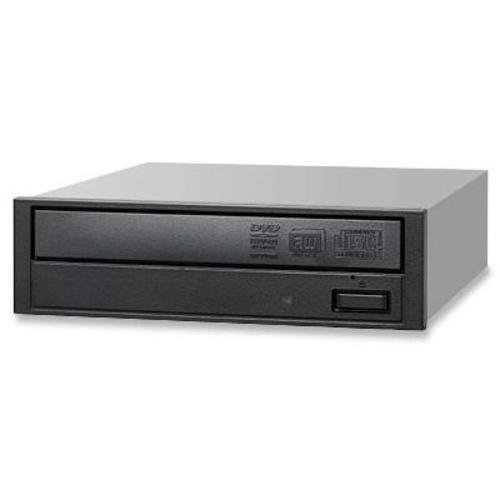
Interface: This is the interface that your optical drive will use to connect to your motherboard. Presently, the most common interface an optical drive will use is a SATA connection. Some older optical drives used IDE, however, the most modern motherboards will no longer support this connection. This makes it harder to re-use older optical drives.
Type: There are several types of optical drives. As mentioned before, optical drives can be either “CD”, “DVD”, or “BLU-RAY” writers or readers. The terminology to differentiate these types of optical drives is as follows:
- DVD Burner: Reads & Writes both DVDs and CDs.
- Blu-Ray Burner: Reads & Writes Blu-Rays, DVDs, and CDs
- Blu-Ray Combo Drive: Reads Blu-Ray discs and reads & writes DVDs and CDs.
- Combo Drive: Less common now, the combo drive term is used to separate optical drives that are DVD readers and CD readers & writers.
Read & Write Speeds: Whether your optical disc drive is reading or writing off of a CD, DVD, or Blu-Ray, there will always be a speed attached to each specific function. For example, DVD+R with a 16X write speed means just that – a DVD that reads at a speed of 16 times.
Cache: In an optical drive, a bigger cache will result in faster writing times. This is because the cache stores information that is going to be written to a disc and the more information it can store at a time means the fast the optical drive has access to it.
Steps to Choosing Your Gaming PC Optical Drive:
Step One: Look for the Cheapest Prices
Honestly, I could care less about the overall quality of an optical drive nowadays; if it works, it works. This, of course, is in the case of purchasing a DVD burner optical drive and not a Blu-Ray writer or reader. Likely, if you are building a PC purely for gaming, you will not have to use your optical drive too often to install newer games as they can be digitally downloaded. I would only focus on the finite details of your optical drive in terms of quality if you are going to be doing a lot of media work (such as looking at write speeds and cache sizes). You should be able to get a decent optical drive for well below $20.
Step Two: Check the Interfaces on Your Motherboard
Allot of the time people will want to use older hardware from their older PCs. If you are trying to use an older optical drive, there is a chance that it does not have a SATA connection and most modern motherboards will not support older IDE connections.
Final words – For choosing your gaming optical drive:
Choosing an optical drive for your gaming PC should not be too hard. Just make sure that you are buying one for a relatively cheap price and that the motherboard supports the optical drive’s interface (for example SATA).

How to Choose Your Gaming PC’s Case:
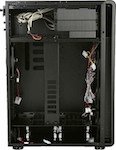
If you have chosen all of the hardware for your gaming PC build, then great – now you must have somewhere to put it all. In this section, I will discuss four steps that you should go through when making the decision as to which PC case you should purchase and or choose. A case for your PC does just that, it encapsulates the hardware, keeps it safe, cool and hopefully free from dust. There is a vast selection of cases out there and the prices vary just as much, so when choosing the right case ask yourself these four questions:
Step One: What is The Form Factor you Need?
The most important aspect of your computer case is determining whether it can actually fit the components you bought for it, this is called a computer form factor. The form factor will minimally depend on the size/form factor of motherboard you are deciding to purchase or greater, and these sizes can include: ATX Desktop, ATX Full Tower, ATX Mid Tower, ATX Mini Tower, MicroATX Desktop, MicroATX Mid Tower, MicroATX Desktop Mini Tower, MicroATX Slim Case, Mini-ITX Tower, and Mini-ITX Desktop.
Don’t be daunted by all the choices given, because the main form factors you should focus on here are ATX, MicroATX, and the less common Mini-ITX. Usually, when you purchase a motherboard you can find what form factor (size) it is by looking at the name (ex. GIGABYTE GA-X58-USB3 LGA 1366 Intel X58 USB 3.0 ATX Intel Motherboard) which will tell you the form factor for that motherboard. In the previous example, you can see that ATX is the form factor for the Gigabyte motherboard. If it is not in the name of the board, you could also look at a motherboard description/details either from the re-seller or manufacturer.
Step Two: What Size of Case do you Need?
There are several sizes of cases within the different form factor dimensions (ATX, MicroATX, Mini-ITX) which as stated above. The different sizes of desktops determine how much you can fit into your case. The descriptions “Full Tower”, “Mid Tower”, “Mini Tower” etc. are simply the size descriptions of a given computer case that will fall into the above standard sizes (For example a Mid Tower PC case generally includes all ATX sized motherboards).
When determining what size of case you want to keep in mind all of what you are putting in your computer. This includes how much storage your pc uses (number of SSDs), the number/size of graphics cards you plan on using, and any other accessories you may be included in your build. Also, keep in mind what you want to add to your computer in the future, or if possible you want to use the same case in a future build.
Step Three: Does This Case Have Enough Cooling?

Cooling and ventilation can be an important factor when choosing a case since the last thing you want is a cramped case that will contain all the heat you computing will excel while processing. Generally, if you want sufficient cooling for any given system, then look for a simple Mid Tower sized case that comes with a few fans. Unless you are doing any serious overclocking etc. this should work out just fine. If you are looking to do a lot of overclocking you would be better off getting a high-quality CPU cooler to use instead of the stock one that came with your processor. If you are concerned whether the case you are trying to purchase has enough cooling look around for some reviews on it. Look for case comments, or you can type the case name in Google (or youtube) and see what you can find.
Step Four: Case Aesthetics – What do You Want Your Case to Look Like?
Once you have an idea of what you want to put in your case and the size of the case, then you will want to shop for what looks most appealing to you. PC cases come in a variety of colors, shapes, and can include additional appeal-like colored lighting. In the end, your PC case ultimately depends on personal taste, so make it your own.
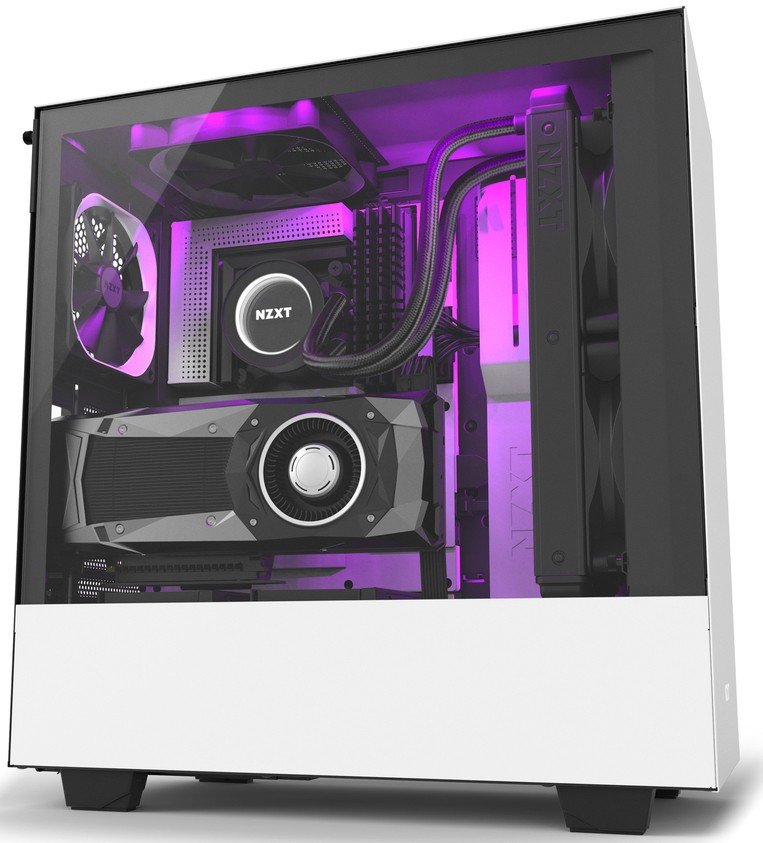
Steps to Putting Your Gaming PC Hardware Together
So you’ve now chosen the hardware needed for your brand spanking new gaming pc build, but now you have to put it together.
We’ve recently crafted the Newb Computer Build step by step video on how to build your Gaming PC Build – the how to build a gaming pc video done here on this site. If you are building your very first pc build, this will help tremendously, and if you have any questions along the way, we are here to help — leave a comment below and ask any questions you like.
Final Words
My goal with this article is to help anyone who is interested in learning how to choose each individual piece of hardware for their gaming pc build while learning a bit more in the process. Hopefully, this article has given you an in-depth overview and the confidence to go about putting together your very own Gaming PC. If you ever have any questions I would be more than willing to help you out, so please leave a comment.
If you are interested in building a Gaming PC Build then please check out Newb Computer Build’s Gaming PC Builds of the Month.
And if there is ANYTHING missing, please let me know so that I can add it in.
Best of luck on your journey building your next Gaming PC!

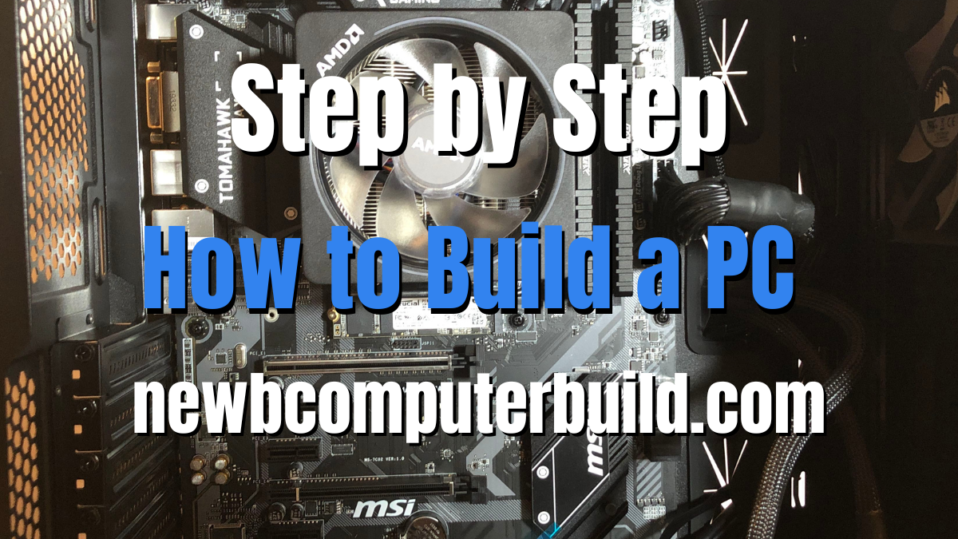

Comments 10
Hi, I’m in the process of upgrading my PC, btw thanks for this guide, very useful, I currently have a ATX Mini tower, I plan on keeping my old case and getting a new GPU such as the GTX 1660, so I was wondering if the physical dimensions of the GPU will matter in this scenario with a case like mine, I currently have a GTX 750TI 2GB in my case and it fits fine and I’m wondering if I’m going to need a new case.
Sorry, I mean my current case is a ATX Mid Tower not a mini.
Author
Hey – great questions, but mid towers would differ in exact measurements in terms of what graphics card lengths they support. I would say it would most likely fit, but to be certain I would look at the length measurement of the specific gtx 1660 model you plan on purchasing. Then if you are able to look up your cases brand online you should be able to find the max video card length is supports (or you may need to measure a bit manually if you can’t find that).
If you know what case you have and the model of the gtx 1660 I can help you confirm as well.
Alright thank you, I was just wondering in general terms for an ATX mid tower, I’m pretty sure it will fit, guess ill just have to manually measure it, I bought it off ebay 5 years ago, I don’t even know the brand or model. But thank you anyway.
Another question, I’m planning on getting a intel I5 9400F, and I’m trying to find the best budget motherboard for it, I tend to use my PC for some gaming (MW, rainbow 6, apex legends, GTA etc), I have a budget of roughly 150$ (under £120), I’m currently looking at the Gigabyte Z390 GAMING X, got any suggestions?
Author
I’d say you don’t need to go too extreme with your motherboard with a 9400F in terms of increasing gaming performance/ I’d say the Gigabyte Z390 Gaming X is a good board and you can defineitly go with that. Although for a little less you could also consider a MSI Z390-A PRO, or if you really wanted to save you could go with a B365 board, such as the ASRock B365 Phantom Gaming 4
Thank you very much, so far I am considering the Gigabyte motherboard, but I might have to go low depending on how much I’m going to spend on the ram and GPU, I’ll have a look at the MSI. I usually like to stick to specific brands i.e. intel only, gigabyte etc, especially since I’ve had good quality from them. But thank you again.
Hi Corey,
Thank you for the fast reply.
I have built systems twice but I just want to take it easy this time and buy things one at a time so the fun lasts longer.
I consider myself having very basic computer knowledge and since the process will probably spread into few months period I want to learn as much as I can and I know there is a LOT to learn.
That is one reason I wanted to make sure I can ask along the way.
I am building my system for Flight Simulator (X-Plane and possibly MSFS 2020 when it comes out), Blender 3D modeling, some video editing and whatever I am interested in.
Here is the plan so far, main components, I will decide on other things later on.
Thank you again Cory!
– Phanteks Eclipse P600S PH-EC600PSTG_AG01 Antracite Gray Steel / Tempered Glass ATX Mid Tower Computer Case
-ASUS Prime Z390-A Motherboard LGA1151 (Intel 8th and 9th Gen) ATX DDR4 DP HDMI M.2 USB 3.1 Gen2 Gigabit LAN
-Intel Core i9-9900 Coffee Lake 8-Core, 16-Thread, 3.1 GHz (5.0 GHz Turbo) LGA 1151 (300 Series) 65W BX80684I99900 Desktop Processor Intel UHD Graphics 630
-CORSAIR Vengeance LPX 64GB (4 x 16GB) 288-Pin DDR4 SDRAM DDR4 3200 (PC4 25600) Desktop Memory Model CMK64GX4M4B3200C16
-Seasonic PRIME PX-1000, 1000W 80+ Platinum, Full Modular, Fan Control in Fanless, Silent, and Cooling Mode, 12 Year Warranty, Perfect Power Supply for Gaming and High-Performance Systems, SSR-1000PD.
-EVGA GeForce RTX 2080 SUPER BLACK GAMING, 08G-P4-3081-KR, 8GB GDDR6
OR – EVGA GeForce RTX 2080 Ti DirectX 12 11G-P4-2281-KR 11GB 352-Bit GDDR6 PCI Express 3.0 HDCP Ready SLI Support BLACK EDITION GAMING Video Card, Dual HDB Fans & RGB LED
Author
Hi Andrzej – looks like quite the robust build! And I love your idea of buying individual pieces at a time, I totally get what you mean, it’ll definitely build anticipation. I’m not too familiar with flight sims, but that build should knock it out of the park. Are you on higher resolution monitors as well?
I am doing this reply as a first one to see if there is any feedback.
I am in a process of buying components and later on will sure have some questions.
Can I count on someone answering here?
Thanks!
Author
Hello Andrzej,
That’s awesome! Let me know if you have any questions while compiling all the parts needed and along the way. What are you planning?
-Corey